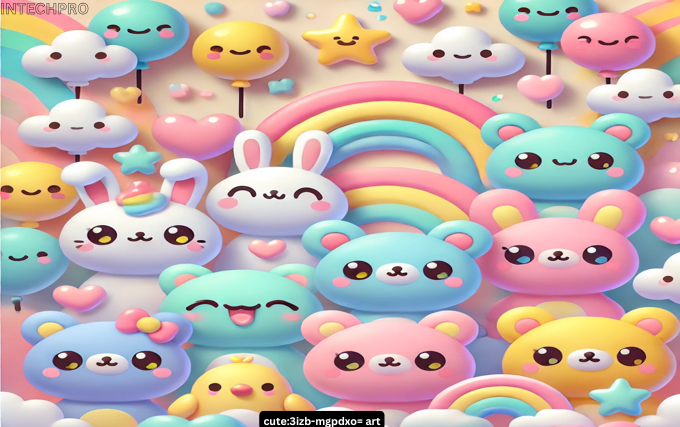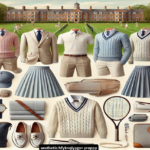“Cute” art, often referred to as kawaii in Japanese culture, is an aesthetic that has captivated the hearts of millions around the world. From adorable cartoon animals to pastel-colored illustrations, cute art embodies a certain innocence, playfulness, and simplicity. While the roots of cute art can be traced back to various global traditions, its modern evolution is largely influenced by Japanese pop culture and a growing international interest in youthful, light-hearted designs.
In this article, we will explore the evolution of cute art, its key characteristics, the influence of cultural movements, and how this artistic style continues to shape media, design, and fashion globally.
The Origins of Cute Art
Cute art, or the concept of visual “cuteness,” has origins that date back much further than modern culture might suggest. In various cultures throughout history, artistic representations of animals, children, and simple forms were often imbued with qualities we now associate with cuteness.
Early Influences: Folk Art and Childlike Representation
In many ancient civilizations, art frequently featured rounded, exaggerated proportions when depicting children or animals. For instance, ancient Egyptian paintings and sculptures depicted young figures with enlarged eyes and soft, rounded facial features, which conveyed innocence and youth. Similarly, in European folk art, artisans would often create chubby, simple figurines representing infants or pets, evoking a sense of tenderness and comfort.
However, it wasn’t until the 20th century that the modern “cute” aesthetic became solidified, gaining traction alongside advancements in print media, animation, and commercial products.
The Emergence of Kawaii Culture
Arguably, the most significant turning point for cute art occurred in Japan with the emergence of kawaii culture. The word kawaii (かわいい) translates directly to “cute” in English, but the cultural significance of the term extends far beyond simple aesthetics. In Japan, kawaii encompasses a vast array of products, media, and fashion trends that emphasize innocence, playfulness, and charm.
The rise of kawaii can be traced to the post-World War II era, when Japan began to experience rapid economic growth. During this period, a shift toward consumer culture led to an increased focus on youth-targeted products. Sanrio’s iconic character, Hello Kitty, which debuted in 1974, became a global symbol of cute art, with its simple design, rounded features, and childlike proportions. Hello Kitty’s global success paved the way for other franchises like Pokémon, My Melody, and Rilakkuma, which brought cute art to mainstream media.
Key Characteristics of Cute Art
What defines cute art? While the concept of cuteness is often subjective, there are several visual and thematic elements that commonly appear in cute art across cultures:
1. Rounded Features
One of the most recognizable aspects of cute art is the use of rounded, soft shapes. Characters and objects are often depicted with large, round heads, wide eyes, and small bodies. These proportions create a sense of innocence and vulnerability that appeals to a broad audience.
2. Pastel and Soft Color Palettes
Cute art tends to favor pastel colors such as baby pink, light blue, mint green, and soft yellow. These colors evoke a sense of calmness and simplicity, further enhancing the childlike and non-threatening nature of the artwork.
3. Exaggerated Emotions
Another key feature is the exaggerated portrayal of emotions, especially happiness, surprise, or sadness. Characters in cute art often display emotions through oversized eyes, expressive faces, and even dramatic tears or hearts, making them more relatable and endearing.
4. Minimalistic Details
Cute art is known for its minimalism. Instead of complex, intricate designs, cute art focuses on simplifying forms. A single stroke might represent a smile, and animals or objects are often reduced to their most essential shapes, such as circles and ovals.
5. Themes of Innocence and Joy
Cute art frequently centers around themes of innocence, love, and positivity. The art often tells stories of friendship, kindness, and joy, which appeals to people looking for comforting and uplifting content.
Cute Art Across Mediums
1. Illustrations and Character Design
One of the most popular manifestations of cute art is in illustration and character design. From simple line art to digital illustrations, the world of cute art offers artists a chance to create characters that inspire feelings of warmth and happiness. Popular franchises like Pokémon, Animal Crossing, and Studio Ghibli’s Totoro rely on cute character designs to build lasting emotional connections with their audience.
Independent artists have also embraced this art style, using platforms like Instagram, Etsy, and Patreon to share and sell their work. Cute art prints, stickers, and enamel pins have become some of the best-selling products for artists aiming to monetize their art.
2. Toys and Collectibles
The influence of cute art has expanded well beyond two-dimensional illustrations and into the world of toys and collectibles. Plush dolls, vinyl figures, and action figures featuring adorable, exaggerated features are among the most popular items in the world of collectible merchandise.
Toys like Funko Pop figures, Nendoroids, and Tsum Tsums have garnered a dedicated fanbase, with collectors eagerly awaiting each new release. These figures often take popular characters from movies, video games, and television shows and reimagine them in a cute, childlike form, emphasizing their most lovable traits.
3. Fashion and Accessories
In the fashion world, cute art has made a significant impact on styles such as Harajuku and Decora in Japan, where bright colors, playful patterns, and oversized accessories dominate. This aesthetic has also influenced streetwear and casual fashion, particularly with the popularity of clothing brands that incorporate cartoonish designs and fun, whimsical prints.
Accessories like phone cases, bags, and jewelry featuring cute characters or pastel motifs are in high demand, allowing individuals to infuse their personal style with elements of cute art.

Custom Patches, as a unique and creative decorative element, not only add distinctive color and style to everyday items such as clothing, backpacks, and even electronic devices but can also be cleverly used to express a cute aesthetic. By carefully selecting or customizing these small patches featuring cartoon designs, pastel hues, or heartwarming messages, one can effortlessly transform otherwise ordinary items into works of art that showcase individuality and exude an adorable charm.
4. Animation and Gaming
Cute art has also had a tremendous influence on animation and video game design. In anime, series such as Cardcaptor Sakura, Sailor Moon, and Kirby epitomize the cute art style with their magical, wide-eyed characters and colorful, playful environments. These shows have been instrumental in spreading the appeal of cute art across the globe.
In the gaming industry, titles like Animal Crossing, Stardew Valley, and LittleBigPlanet have embraced the cute aesthetic, offering players immersive worlds where they can explore, build, and interact with endearing characters.
The Psychological Appeal of Cute Art
What makes cute art so universally appealing? Studies in psychology suggest that humans are hardwired to respond positively to “cute” features, particularly those that mimic the appearance of babies. Evolutionary biologists refer to this as “baby schema” or Kindchenschema, which describes the set of physical features—such as large eyes, chubby cheeks, and small noses—that elicit caregiving behaviors and positive emotions in humans.
In modern culture, cute art taps into these primal responses by exaggerating childlike characteristics, making the viewer feel a sense of protection and affection. This phenomenon explains why people are drawn to cute art, often finding comfort and joy in the simplicity and warmth of the style.
The Role of Social Media in Spreading Cute Art
In today’s digital age, social media has played a crucial role in the spread and popularity of cute art. Platforms like Instagram, TikTok, and Pinterest have given artists an avenue to showcase their cute art to a global audience. Hashtags like #kawaiiart and #cuteart have millions of posts, demonstrating the widespread appeal of this aesthetic.
Many artists and influencers have built entire careers around cute art, creating viral content that combines playful illustrations, quirky animations, and personal branding. The accessibility of digital art tools has also enabled more people to experiment with the cute art style, further growing its presence online.
Conclusion
Cute art, with its universal appeal and positive emotional impact, has become a global phenomenon. From its cultural roots in Japan’s kawaii movement to its influence on illustration, fashion, and entertainment, cute art has carved out a significant place in the modern creative landscape. Its ability to evoke joy, nostalgia, and warmth ensures that it will continue to thrive as an artistic and cultural movement for generations to come.
Whether through whimsical characters, vibrant color palettes, or heartwarming stories, cute art reminds us of the beauty of simplicity and the importance of finding joy in the little things.


